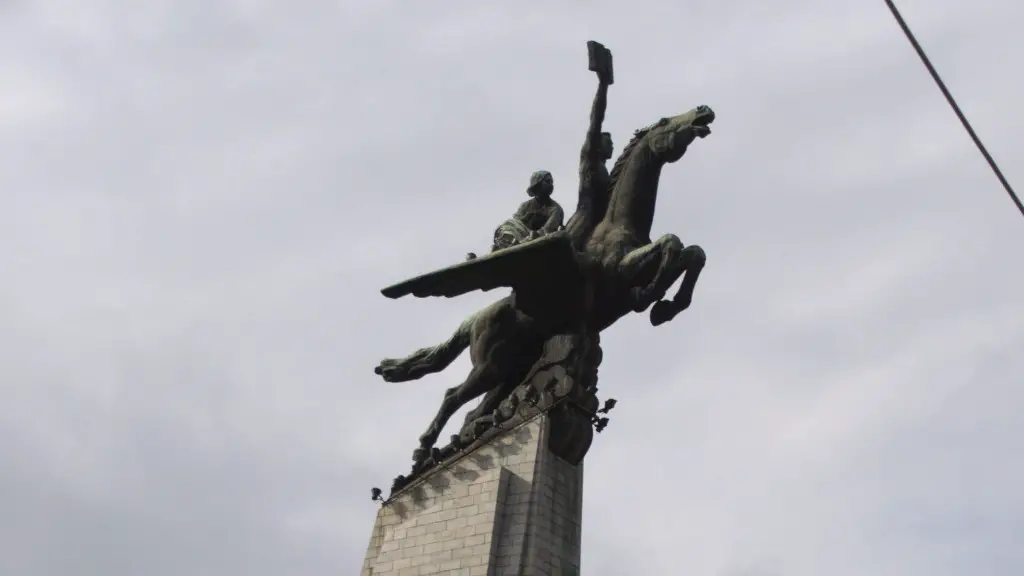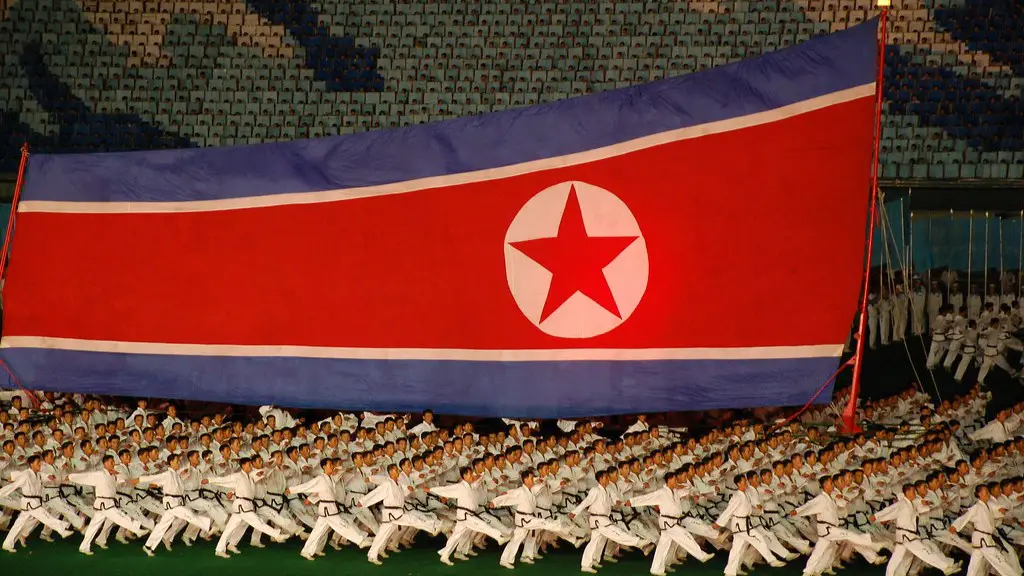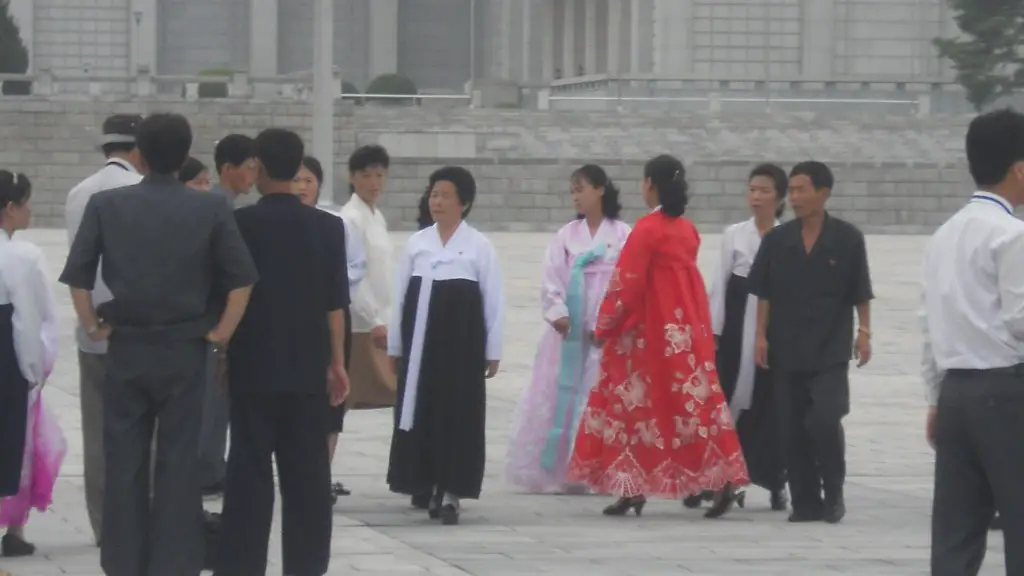North Korea is a country deeply isolated from the world in many ways. When it comes to the absence of cars, North Korea’s situation is quite peculiar. While some experts attribute the lack of cars to poverty and economic sanctions, others argue that the absence of cars is also due to the government’s autocratic measures and the nation’s policy of self-reliance. Whatever the precise reason, the situation is one that is unique and signals a way of life quite different from the rest of the world.
According to the United Nations Office of the High Commissioner for Human Rights, North Korea is one of the most impoverished countries in the world. The poverty of the country and economic sanctions imposed on it by other countries are the major factors contributing to the lack of cars in North Korea. These sanctions prevent North Korea from accessing funding, making it difficult for the country to purchase cars from overseas, and further affecting its ability to produce its own automobiles domestically.
Moreover, the North Korean government’s autocratic measures also contribute to the lack of cars. The government strictly restricts private ownership of cars, limiting their availability to members of the ruling class. This policy is part of the government’s strategy of maintaining political control, preventing the formation of a wealthy, powerful middle class and thereby maintaining their authority over the population. Those who do possess cars typically drive vehicles obtained from the central government and this restricts the ability of the people to gain access to cars.
North Korea’s policy of self-reliance is also a factor in its lack of cars. North Korea embraces a policy that fixates on economic security, meaning they prioritize promoting self-sufficiency as opposed to seeking aid from other nations. As part of this policy, North Korea makes a conscious effort to reduce imports, including cars, and instead promotes the production of its own automobiles. However, this effort has been hampered by economic sanctions and technological limitations.
The situation in North Korea is a complex one and its uniqueness is demonstrated in the absence of cars. While some experts argue that poverty or economic sanctions are the root cause of the issue, others suggest that it is part of a strategy employed by the government to maintain control over its population. Regardless, North Korea’s absence of cars is a telling example of how different life can be for its citizens compared to people in other parts of the world.
Economic and Political Impact of North Korean Carlandscape
The lack of cars in North Korea has had a massive economic and political impact on the country. In terms of economics, the country has not been able to reap the economic benefits that can come from the automobile industry. This is due to the fact that North Korea has missed out on building an infrastructure that can support the automobile industry, as well as investing in research and development. This has led to a loss of potential investment and the creation of jobs.
Politically, the lack of cars has had a huge effect on the country. This is because cars are a symbol of wealth and status, and in North Korea, they can only be obtained by the political elite. This has led to a situation where the citizens do not feel empowered and it has further entrenched the authority of the ruling class. Without access to cars, the citizens are unable to gain the same mobility as other citizens. This has further led to a lack of freedom and has hindered the nation’s potential for creative development.
Infrastructure Requirements to Reintroduce Cars
The reintroduction of cars in North Korea would require a significant amount of investment. This is because the infrastructure that supports cars needs to be developed and modernized before cars can be introduced. The most crucial infrastructure requirement is the roads, as the North Korean roads are in a state of disrepair.
The other infrastructure that needs to be developed are gas stations, car parks and garages. This is because without these facilities, the potential for the automobile industry in North Korea is limited. Furthermore, the lack of these facilities could lead to undesirable circumstances, such as illegal parking and lack of maintenance of vehicles.
Furthermore, the automobile industry in North Korea would also need to be supported by the government in order to thrive. This would require subsidy, incentives and other measures that would attract investors and entrepreneurs. Furthermore, the government would also need to ensure that the safety measures are in place, in order to protect the citizens from potential accidents.
Advantages and Disadvantages of Reintroducing Cars
The reintroduction of cars in North Korea has its advantages and disadvantages. On the positive side, reintroducing cars could lead to economic growth and an increase in the quality of life in the country. This is because the automobile industry could create jobs and attract investment that may have been otherwise lost due to isolation and sanctions. Furthermore, it would also increase mobility for the citizens, allowing them to travel and explore different parts of the country.
On the other hand, reintroducing cars could also lead to a number of problems. For example, traffic jams and air pollution are potential hazards that could arise from increased automobile usage. Additionally, the presence of cars could increase the disparity between the wealthy and the poor, as only the rich will be able to afford cars. Finally, the presence of cars could also decrease the use of public transportation, leading to further dependence on fossil fuels and environmental degradation.
What the Future Holds
At present, the situation with cars in North Korea is complex and it remains to be seen what will happen in the future in the country. Some experts suggest that the country is more likely to invest in modernizing public transportation to increase mobility, while others suggest that the government may open up to the automobile industry. However, what is certain is that regardless of the outcome, the situation provides an illustration of the unique situation of the country that is unlike anything seen in the rest of the world.
Conclusion: What can be Learnt
Overall, North Korea’s absence of cars is an interesting story that reveals much about the country. The lack of cars is due to a combination of poverty, economic sanctions, the government’s autocratic policies and the country’s policy of self-reliance. Furthermore, the reintroduction of cars in North Korea would require significant investment and could lead to a number of potential drawbacks. Ultimately, North Korea’s lack of cars provides a telling example of how different life can be for its citizens compared to people in other parts of the world.



